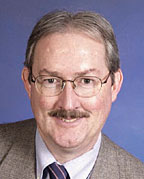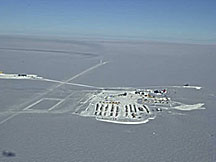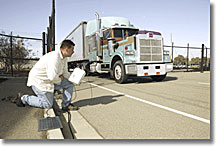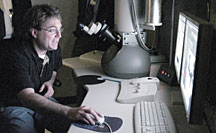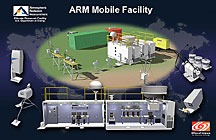| Research
|
In July 2004, Thomas Bowles was named Los Alamos National Laboratory's Chief Science Officer (CSO). The CSO is a senior leadership position at Los Alamos that reflects a growing need to have a champion of science. For the role of champion, a veritable world-class researcher was chosen. Bowles was named to the CSO position from research in the Laboratory's Physics Division as the principal investigator on the Laboratory's Ultra-Cold Neutron program. According to Bowles, "It is essential to the Laboratory's future to relieve the stress that the applied and basic research programs face and to carefully plan our future science program. Unless we can do that, it will be difficult to guarantee the long-term viability of the stockpile and to maintain a truly world-class research effort." Bowles received his Ph.D. from Princeton University and came to Los Alamos in 1979 from a postdoctoral position at Argonne National Laboratory. He founded the Laboratory's weak interaction physics effort that has made Los Alamos a world leader in non-accelerator nuclear and particle physics. Bowles was elected as an American Physical Society Fellow in 1993, as a Los Alamos Fellow in 1994, and in 2000 received a Laboratory Distinguished Performance Award for his work on the Ultra-Cold Neutron program. In 2003, the Institute for Nuclear Research of the Russian Academy of Sciences honored him with the M.A. Markov Prize for his work as a principal investigator of the Soviet-American Gallium Experiment, a major solar-neutrino investigation. As CSO, Bowles will report to the Laboratory Director and focus on enhancing and planning the future of science at the Laboratory. As the person chosen to champion science at Los Alamos , Bowles hopes to lead the same way as he would prefer to be led, by example. Submitted by DOE's Los Alamos National Laboratory |
|||||||||||||||||||||||||||
|
Check out symmetry—the
|
Have profiling microwave radiometer, will travel
Balloon-borne sounding system. Check. Micropulse lidar. Check. Infrared thermometer. Check. Eddy correlation flux measurement system. Eddy correlation flux measurement system?! Check already. These and a dozen other instruments that make up the world’s most sophisticated moveable, atmospheric-measuring suite made their initial sojourn last month aboard two shipping containers on a flatbed truck, bound from DOE's Pacific Northwest National Laboratory in eastern Washington to Point Reyes National Seashore, north of San Francisco. Having been designed and successfully tested at PNNL, the ARM Mobile Facility, or AMF, is now being reassembled to take in the Pt. Reyes atmosphere, literally, for nine months before heading to sub-Saharan Africa, in time for the 2006 monsoon season in Niger. The instruments are designed to withstand temperatures from minus-40 to plus-120 degrees Fahrenheit, said PNNL's Kevin Widener, AMF chief engineer who supervised the testing. The station is designed to measure the physical properties of literally anything that blows over and the heat that radiates from clouds and from the ground, said Widener, who, with Tom Ackerman, a Battelle fellow at PNNL, designed and put together the $1.4 million system at the behest of the DOE Office of Science. The AMF is part of DOE's Atmospheric Radiation Measurement (ARM) Climate Research Facility, which already includes fixed sites in Oklahoma , the North Slope of Alaska and the Tropical Western Pacific region near northeastern Australia. The AMF expands the ARM program's reach into additional climatic regions, providing critical information now missing in models. Besides PNNL's engineering team, key collaborators in the AMF project include Argonne , Brookhaven and Los Alamos national laboratories. For more information, see Submitted by DOE's
Pacific Northwest |
